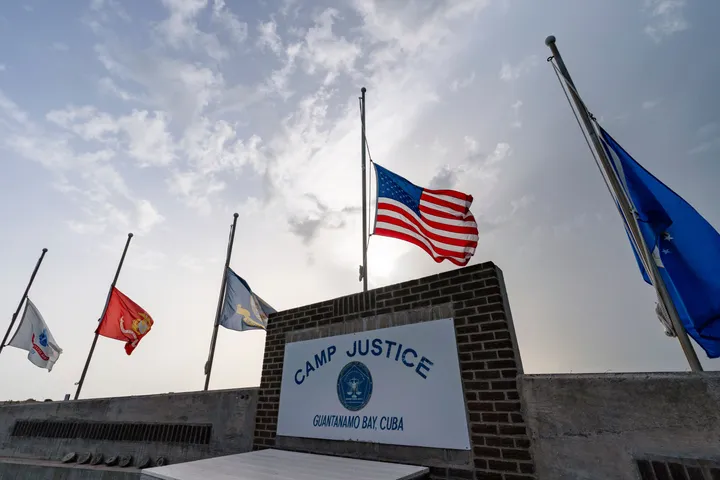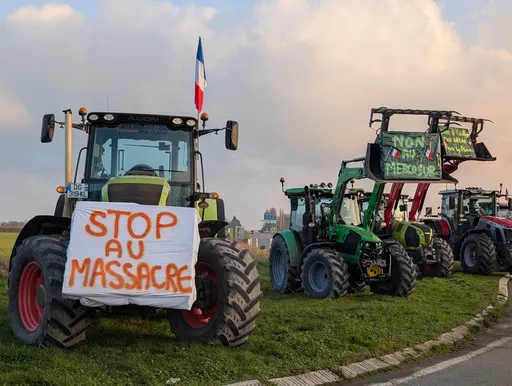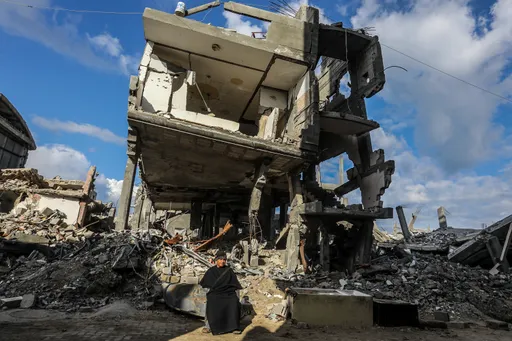Srinagar, India-administered Kashmir —"Naya Kashmir" - the Bharatiya Janata Party-led Indian government’s promise of a ‘New Kashmir’ to its countrymen, has suddenly once again caused a clamour on social media.
The Naya Kashmir envisaged by the millions of Indians on the behest of the Indian government, while Kashmiris were put under a stringent lockdown and completely detached from the world, has taken a shape that might not fit the imagination of your average Indian.
Naya Kashmir was to be a ‘prosperous, developed and terror-free’ Kashmir, in the words of Indian Prime Minister Narendra Modi. A year after the promise was made, the words have rung hollow, and where they have grown teeth, sting only Kashmiris.
The right-wing BJP-led Indian government on August 5 last year stripped the disputed region of Jammu and Kashmir (J&K) of its special status and relegated it to two federally-administered territories.
The decision marked the annexation of the region that is a bone of contention between India and Pakistan with China an active third party to it, as it lays claim over parts of Ladakh.
While millions of Hindu nationalist Indians poured out on streets to celebrate the “complete integration” of Kashmir with India, the people in the Valley were literally caged inside their homes for months to curb any possible response, dissent and reaction.
A year later, Kashmir finds itself on the verge of a massive political and geographical demographic change. Or if some political observers are to be believed, the change has already set in.
The Indian government appointed its representative, Lieutenant-Governor G C Murmu, to administer Kashmir. Under his watch, a slew of orders were passed aimed at changing the political and geographical demography of Kashmir.
From the controversial residency law to the authoritative media policy and changes in its administrative set up, the disputed region is taking a form that deeply worries Kashmiris.
So the question is how much – if not what – has changed in Kashmir in the past one year? Let's deconstruct the events, government decisions and the outcomes to understand where Kashmir is headed.
Demographic change
The special status of J&K identified Kashmiris as permanent citizens of the region, which essentially meant that anyone from outside the region could not become a citizen. The status prevented anyone from outside to apply for jobs or buy property in Kashmir - a shield aimed at preserving the political and cultural identity of the region.
The nullification of Article 370 and Article 35-A of the Indian Constitution and the introduction of residency law ensured that people from outside can buy property, apply for jobs and even get voting rights in the region, if they meet certain criteria.
The law has led to the apprehension that with the influx of non-Kashmiris by virtue of the Domicile Act, it may lead to a complete assimilation of Kashmir and a drastic political demographic change. According to the Indian Ministry of Home Affairs, around 370,000 domicile certificate have been granted out of which over 290,000 are in Jammu and over 79,000 in the Kashmir Valley.
Since the government has activated the process of issuing domiciles to outsiders to J&K, political observers say the influx will be continous and facilitated by the government to add more non-Kashmiris to the region.
In the event of a plebiscite, a demand that Kashmir has been fighting for since India and Pakistan became independent in 1947, the additional population of non-Kashmiris will have a game-changing impact on the results.
But that is a distant idea. The immediate consequences of the Domicile Act will lead to a demographic change, militarised settlements, dispossession and alienation of land in Kashmir.
“If a Kashmiri fails to meet the new criteria, whether by malice/manipulation or by design of the new rules, the revocation of residency rights will inevitably lead to forcible transfer out of Kashmir in search of shelter and employment. The forcible transfers of population may qualify as a war crime under the Rome Statute of the International Criminal Court as well as a grave breach of the Fourth Geneva Convention,” says Mirza Saaib Beg, a Kashmiri lawyer.
The new act also translates into a surge of unemployment in Kashmir.
Saaib further explains: “Prior to the Jammu & Kashmir Reorganization Order 2020, a total of 400,800 Grade A to D government jobs were available only for residents but the new arrangement opens the field for anyone that meets the criteria without taking the consent of the people of Kashmir. The 2016 Economic Survey Report had pegged 25 percent of Jammu & Kashmir’s population between 18 and 29 as unemployed. The new changes are set to increase the levels of unemployment.”
At the height of the coronavirus pandemic, the government allowed the entry of over 11,000 non-Kashmiri labourers in the Valley in a span of less than a week. Official figures show that 14,000 non-Kashmiri labourers arrived in July alone.
The huge and sudden influx of non-local labourers, while Kashmiris were restricted indoors, signalled to Kashmiris that the Indian government was undertaking a settler-colonial project.
Shattered economy
Contrary to what the BJP-led Indian government said after the abrogation of Kashmir’s special status, the business community in the Valley says they have been disempowered, the economy has been left in tatters and unemployment has peaked.
The Kashmir Valley has been under a series of lockdowns since August 5 last year. The government-induced curfew lasted several months followed by the civil shutdown that stretched until winter, the period when both business and life go slow in the Valley. The winter was followed by a coronavirus-induced lockdown that continues today.
The very first sector hit by the shutdowns in Kashmir was transport. Since last year transport has been consistently halted. While other businesses partially resumed, transporters say they have not earned anything for the last one year. Hundreds of private busses, the lifeline of Kashmir, are parked in several districts, gathering dust and rust.
“There is no work for us in Kashmir. Before the corona lockdown, there was another lockdown because of the abrogation of Article 370. My bus has been standing in the yard for a year now. I had to dismantle my bus and sell the parts to a junk dealer. I have a family and I have to feed them,” said Zahoor Ahmed, a bus driver from Budgam.
Kashmir Chamber of Commerce and Industry president Sheikh Ashiq estimates that the losses incurred by the Kashmir business community since August 5 last year is around $5 billion.
“And in this course of time, we have lost around 500,000 jobs. More people have been unemployed which is a growing concern. Our women folk, who played a key role in the handicraft sector, have also been rendered unemployed. They have been disempowered. Its supply chain has been disturbed due to the curbs on the internet. They couldn't receive orders online,” Ashiq says.
He says the economy has been shattered as the Valley “jumped from one lockdown to another.”
“Unfortunately, we cannot see the light of the day.”
Ashiq says young entrepreneurs are closing their businesses in the Valley and migrating to Indian cities to get jobs.
“I feel if concrete steps are not taken for the complete bailout of the businesses, we are going to face economic collapse,” he warns.
Disenfranchising Kashmiris
The last elected government in Jammu and Kashmir was a coalition between the Peoples Democratic Party and BJP. In 2018, the government collapsed and since, the region has been directly ruled by the Indian federal government through its representatives.
After J&K was formally downgraded into a Union Territory, with the entire political leadership in detention, the reigns of the region were in the hands of the centre who took several decisions on a whim.
But amid all this, a significant change that concerns Kashmiris is the waning presence of Kashmiri Muslims in the upper echelons of the administration. This has been reminiscent of the infamous rule of Hindu kings in Kashmir when the representation of Kashmiri Muslims in the administration and offices was dismal, despite being a predominantly Muslim-majority region.
A senior pro-India politician in Kashmir, Ghulam Hasan Mir, says that that Kashmiri Muslims were being sidelined in the administration.
“In the civil bureaucracy, police and judiciary, Muslims in Kashmir feel nowhere. They are being sidelined and there is complete imbalance in the system. Kashmiris are found nowhere and even in the Civil Secretariat, the seat of power, the dejected Kashmiri officers are feeling detached,” Hasan Mir told a local news outlet.
Kashmir’s noted academician, historian and political observer, Dr. Sheikh Showkat says the local administration of J&K has been paralysed now. Earlier, he says, mainstream politicians at the very least gave the administration a “local flavour," but with mainstream politics in shambles now, it is overtly “a complete colonial setup where everything is decided from New Delhi and it simply is communicated to the administration at the highest level.”
“Now that does not trickle down to the lower levers. Obviously, because that administration at the highest level comprises of outsiders who have no knack with those at lower level,” Dr. Showkat says.
The marginalisation of Kashmiris in the administration and the core decision-making corridors became more evident when a photograph showed J&K Lieutenant Governor in a meeting with a room full of bureaucrats in April this year: out of the 19 men in the photograph, there was only one Kashmiri Muslim.
Land redistribution
Kashmir qualifies as the most militarised zone on earth. As already admitted by the Mehbooba Mufti government, 20,000 hectares of land is under occupation of the Indian army. That means there is very little habitable land to go around for its new residents without deforestation in Kashmir.
The J&K administration recently modified a law to facilitate smooth construction in 'strategic areas' for the requirements of armed forces. The 'strategic areas' have been vaguely defined by the government as locations which will fulfil the operational needs of the armed forces.
The new law essentially means that land — notified as strategic areas — on which army constructions exist, would be wholly acquired. Also, any construction on such land would be permanent.
The law has given rise to fears that the administration could notify an entire area as "strategic" and hand it over to the armed forces where they can construct buildings and even residences for their families.
The J&K administration also withdrew an old law that required a 'no-objection certificate' from the J&K government for acquisition or requisition of land in favour of the Indian Army and other armed forces.
Media muzzle
On April 18 this year, the Jammu and Kashmir Police booked photojournalist Masrat Zahra under a controversial anti-terror law for, as the police described it, “anti-national” posts on social media.
A few days later, Kashmiri journalist and author, Gowhar Geelani, was booked “indulging in unlawful activities” and “glorifying terrorism in Kashmir” for what he posted online. Another senior journalist Peerzada Ashiq, was booked for allegedly publishing “fake news”.
The charges against the three journalists triggered massive criticism and was termed as intimidation and harassment of media persons in J&K. But this was just a taste of what was coming for the media in Kashmir.
On June 2, the administration released the new Kashmir Media Policy, which it said was aimed at “effective communication and public outreach.”
The policy essentially means that the J&K Information Department will now keep a check on media in Kashmir. However, a clarification, said the Information Department has no locus standi on the issues of media in Kashmir, thus contradicting the very essence of the policy.
A part of the policy states: “There shall be no release of advertisements to any media which incite or intend to incite violence, question sovereignty and integrity of India or violate the accepted norms of public decency and behaviour.”
The Media Policy 2020 also states that any individual or group indulging in "fake news, unethical or anti-national activities or plagiarism shall be de-empanelled," which basically means they will lose official recognition or access. On top of that, the individual or the organisation will be subject to legal prosecution.
“Media fraternity is of course not happy with the policy because it is a policy which aims at unilaterally regulating the news feed. Also, this media policy is being introduced in the backdrop of a lot of complaints of harassment by freelance and many other journalists. The Kashmiri media fraternity has not condoned it,” said Riyaz Masroor, a senior journalist with the BBC.
Masroor says the fraternity is questioning the need of introducing a media policy.
“Such a policy was not introduced when there was anarchy in the state for six years; there was no government in the 1990’s when the armed insurgency erupted. Even then there was no media policy as such.”
The policy is seen as another step by the administration to “muzzle the press” in Kashmir.
A senior journalist, who spoke to TRT World on the condition of anonymity, says that what has happened to journalism in the Valley since August 5 last year is unprecedented: “There is so much intimidation and threat that it has forced many journalists into such unacceptable self-censorship that sometimes it feels like journalism is no longer possible from this place."
While intimidation and harassment of journalists is not new, it has only surged in the past few years, another senior journalist observes.
“Given what the Indian government did on August 5 and what it intends to do, it could do neither with any free space intact. A free media would be one of the biggest hurdles in its demographic plans,” says Hilal Mir, senior journalist based in Kashmir.
Stifling political activity
Hours before the Indian government announced the decision to annex Kashmir last year, it jailed all the pro-India and pro-freedom leaders in Jammu and Kashmir, not even sparing allies.
Three Chief Ministers of Jammu and Kashmir were among those detained. While two of them have been released, the lone female former head of the Jammu and Kashmir government continues to remain in detention. Besides them, the entire pro-freedom leadership remains jailed.
The incarceration of politicians essentially stifled and then completely curbed mainstream political activities in the Valley. Barring the ruling BJP’s workers, no other political leader spoke about or against the events that unfolded in Kashmir since August 5 last year.
J&K National Conference spokesperson Imran Nabi Dar says the future of mainstream politics in Kashmir is uncertain. “Nobody can predict what the future will be for mainstream politics in Kashmir. Obviously it is impacted. There are many political leaders who are still under detention. We have not resumed our political activities but we have been meeting informally,” Dar says.
The BJP, while it had announced bifurcating J&K into two Union Territories, said it would restore statehood to the region after the situation turns normal. Mainstream political activity in Kashmir has started to gain slight momentum in the past two weeks, after former Chief Minister and National Conference President Farooq Abdullah demanded statehood status for the erstwhile state and another former state head and the opposition leader Ghulam Nabi Azad met the Indian Prime Minister Narendra Modi with the same demand.
Another National Conference leader, Omar Abdullah, who has also been chief minister of J&K, was quoted in an interview as saying that he would participate in the political process of a Union Territory.
“That you restore our statehood, give us back what you took away from us to insult and humiliate us like this, reducing us from a state to a UT. And then, we’ll go ahead from there (sic),” he was quoted as saying in Indian media.
The demand by the National Conference is a significant shift from its earlier poll plank: autonomy.
The Grand Old Party of Jammu and Kashmir has maintained a weak stance on the demand for the restoration of Article 370 – that established the quasi-autonomous relationship Kashmir had with India – while stressing more on restoration of statehood, though the party spokesperson says they are committed to the (restoration of) Article 370 and they will fight it out legally.
The case with the second-largest regional political party, PDP, is no different. While the National Conference has been vocal about statehood demand, the PDP has remained silent on almost all issues so far.
PDP’s leader Waheed Rahman Parra, who continues to be under house arrest, says that mainstream politics in Kashmir has been rendered irrelevant by the Centre. “Relevance too big of a thing. For us, it is the fight for space. I am not able to move out, talking about politics is far-fetched,” Parra says.
Parra’s worries are not unfounded. PDP chief Mehbooba Mufti’s detention was recently extended by three months. Many of its leaders continue to be restricted from moving around freely.
Promise of peace
Amid all the changes Kashmir has been through for the past one year, one of the major claims of the Indian government that the violence will abate with the stripping of special status, has been rendered hollow.
A bi-annual report published by Jammu and Kashmir Coalition of Civil Society (JKCCS) reveals that Kashmir saw 229 killings in 107 incidents of violence during the first six months of this year.
Also dozens of residential buildings were razed or burned to ashes during gun battles between Indian forces and militants. On the de-facto border that separates India and Pakistan in Kashmir, there have been around 2,319 ceasefire violations from January to June this year, almost double the number of violations (1,309) recorded during the same period in 2019.
On the anniversary of Kashmir’s “new era of dawn” in the words of the Indian Prime Minister, the Valley has been, once again, put under a strict curfew. The desolate roads punctuated with armed forces, barbed wire and barricades are reminiscent of last year’s shutdown and a reminder: nothing and everything has changed in BJP’s promised Naya Kashmir.
























